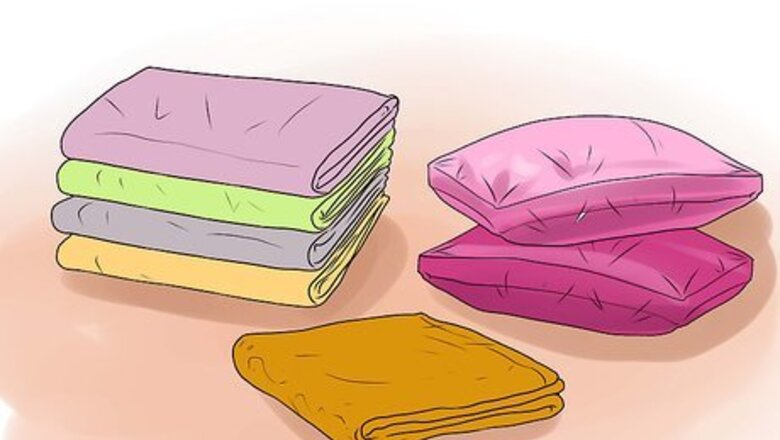
views
Preparing to Sleep Sitting Up
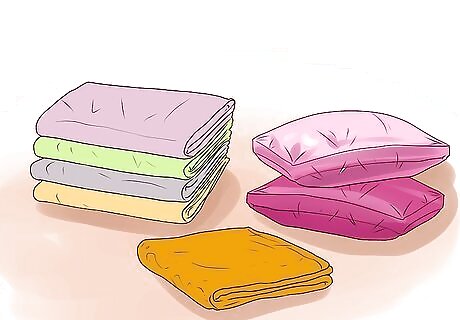
Gather bedding. If you have time to prepare before trying to sleep upright, gather bedding such as a blanket, pillows, towel, or a mat. This bedding will make you more comfortable, and reduce any soreness from sleeping upright. Wearing loose, comfortable clothes and light shoes will also make it easier to sleep while sitting up. A special travel pillow can provide support for your head and neck. These come in a variety of forms: some go around your neck, some over your shoulder, some attach to the side of a seat, and some can be used in multiple positions. Look for these types of pillows in luggage stores, airport shops, etc.

Gather supplies that will help you sleep. Some people find it easier to sleep while wearing earplugs or headphones to block outside noise and/or distractions. Likewise, many people find an eye mask useful for blocking out light. If you have other things that are part of your routine for going to sleep, such as a book to read or mug of tea, try to have them with you. Making your sleep routine as normal as possible will help you fall asleep sitting up.
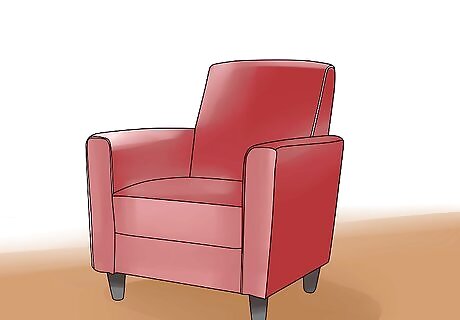
Find a place to sleep. If you are sitting in a chair, such as on an airplane or train, you can make the best of it and sleep there. If you are free to move and find a place to sleep, however, look for a vertical surface such as a wall, fence, or post to lean against. If you have a board or some other flat surface, you can also lean that against something and rest against it. A surface that is sloped slightly backwards is best. The cushioning of a chair, recliner, or couch can be more comfortable than a hard surface such as a wall when you are trying to sleep sitting up. If you only have a hard surface, however, you can make it more comfortable by using pillows and blankets for padding. If you are traveling with a friend, or have one nearby, it can make things easier. You can lean against each other (or take turns) and try to sleep.
Getting Your Sleep Site Ready
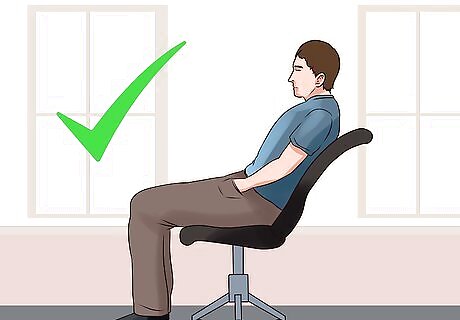
Recline yourself. Leaning yourself back at an angle of about forty degrees is recommended when trying to sleep upright. If you are in a seat on an airplane, train, bus, etc. it may lean back slightly. If you are elsewhere, a reclining armchair is a good choice if you can find one. Otherwise, just lean against a surface at a slight angle.
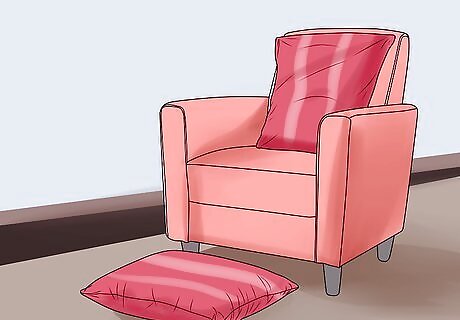
Make your sleep site more comfortable. If you are not sleeping in a chair or other surface that is cushioned, you will want to make things more comfortable using the bedding you gathered. Even if your site is already cushioned, you may find a blanket and pillow makes things more comfortable for you. Put a blanket, pillow, or mat on the ground or floor underneath you. Put a blanket, pillow, cushion, or other padding behind you. This will provide support for your back. Roll up a blanket or towel and place it or a small pillow behind you at your lower back. This will provide extra support for your lumbar region and minimize soreness. Place a thin pillow behind your neck. This will allow your head to fall slightly backwards, which can make it easier to fall asleep. Specialty neck pillows are made for this purpose, but you can use whatever you have available.
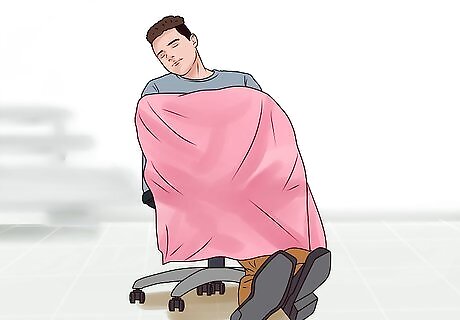
Use your blanket. Once you've prepared your sleep site and cushioned support, lean back and use your blanket to cover you. This can provide warmth and comfort, making it easier for you to fall asleep. If you don't have a blanket, try using a coat, sweater, or anything similar that's available.
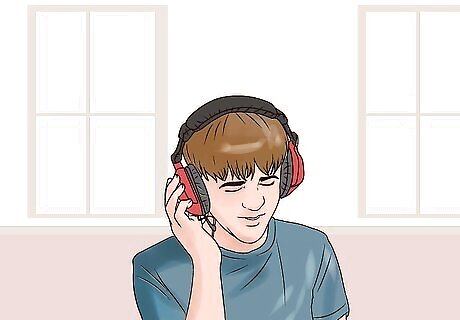
Try to approximate your sleep routine. Read a book, listen to music, or whatever else helps you relax and go to sleep. Even though you are sitting up, this routine can help you fall asleep as you normally would. You can even drink some Valerian or chamomile tea before bed, which, according to sleep medicine and psychiatry professional Alex Dimitriu, can help you sleep for a bit longer. Meditation and/or breathing exercises are also recognized as calming techniques. A simple breathing exercise is to inhale for a count of 3 or 4, then exhale for a count of six or eight. A few repetitions of this can be very helpful when trying to calm down and go to sleep sitting up. Don't get discouraged if you don't fall asleep immediately. Just try to relax and get the best rest you can.
Staying Asleep while Sitting Up
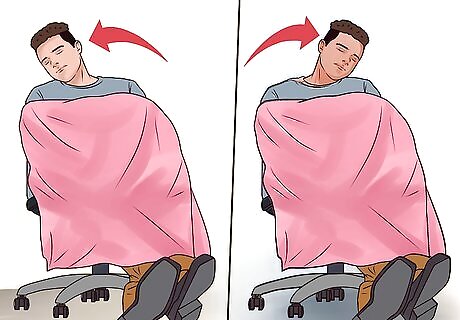
Shift as needed to stay comfortable. Altering your position periodically as you sleep sitting up helps to reduce soreness and encourages better sleep. If you wake up while trying to sleep, stretch your legs a bit and shift position slightly (for example, turn your head or shift your body slightly to one side).

Give your head extra support if necessary. Keeping your head in a comfortable position is important for staying asleep. If your head slips to one side, move your support (pillow, blanket, etc.) to the side to give your head more support. If you head keeps drooping, you can also wrap a scarf around it and the back of your support (chair, post, etc.), if possible. This helps to hold your head in place while you get more sleep.
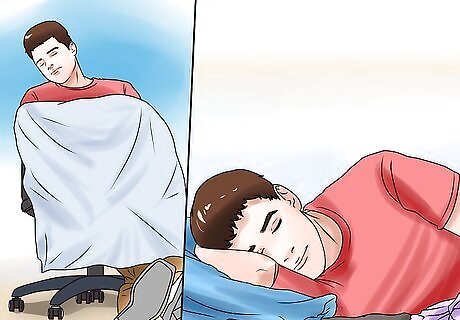
Get better rest as soon as you can. Sleeping sitting up can be fine for a short nap, or when you don't have any other choice. However, it can be hard to get the “active,” REM sleep your body needs while sitting up. As soon as you are able, get deeper sleep in a more comfortable place, such as a bed, couch, or hammock.



















Comments
0 comment